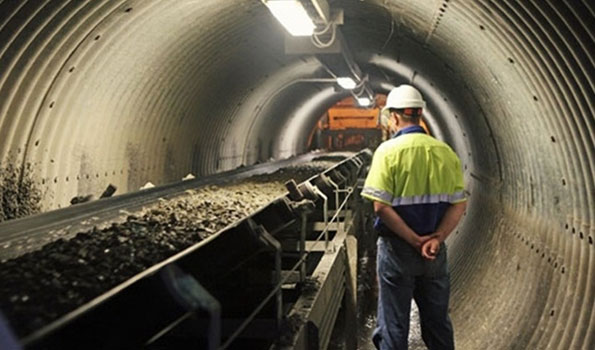… Company pleads for comprehensive resolution of Acacia’s disputes with Tanzania Government.
By TZ Business News Staff.
Tanzania’s largest gold miner, Acacia Mining Plc, has reported in the second week of February, 2019, a leap in gold production beyond expectations during financial year 2018.
“I am pleased to report that during 2018 we successfully stabilised the business with our focus on operational performance across all three mines”, Peter Geleta, Acacia’s Interim CEO has said in statement released on Monday, February 11, 2019.
“We achieved gold production of 521,980 ounces for the year, substantially ahead of our initial 2018 production guidance of 435,000 to 475,000 ounces, and we maintained a strong cost discipline achieving an all-in sustaining cost of US$905 per ounce sold, well below the full year guidance range of US$935 to US$985 per ounce.
“This would not have been possible without the sheer resilience, hard work and determination of all of our people and I would like to thank each and every one of them for their contributions to the Acacia Group, particularly given the continued challenging operating environment this year.
“We were able to return the Company to free cash flow generation in the second quarter of the year, a trend which was sustained during the second half, ending the year with a net cash position of US$88 million. At the same time, we continued to demonstrate our long-term commitment to Tanzania and its mining industry, contributing over US$127 million in taxes and royalties, spending over US$273 million with local suppliers in Tanzania, achieving a rate of 97% local employees and investing US$8.8 million in our Sustainable Communities strategy to improve the lives of those living near our mine sites.
Peter Geleta continued: “We are also highly encouraged by the provisional outcomes of the Bulyanhulu optimisation study, with a focus on achieving higher margin ounces in line with the Company’s focus on free cash generation.
“The provisional outcomes support a potential life of mine of 18 years and delivery of an average steady state production rate of 300,000 to 350,000 ounces per year at an AISC of US$700 to US$750 per ounce assuming a successful resumption of underground mining and the ability to economically produce and sell gold concentrates.
“To that end, we continue to provide support to Barrick in its discussions with the Government of Tanzania and believe that a negotiated resolution is in the best interests of all stakeholders.”
The [2018] result compares favourably to 2017 when the cash balance fell from US$318 million to US$81 million at year-end, due to lost revenue resulting from the concentrate ban and a gross build-up of VAT receivables of US$91 million.
The North Mara mine continued to perform well, achieving full year production of 336,055 gold ounces, 4% higher than 2017, and benefited from the higher grade ore received from the eastern part of the Nyabirama open pit. AISC of US$866 per ounce sold was 8% higher than 2017, primarily due to higher cash costs and sustaining capital costs.
“We achieved full year gold production at our Buzwagi mine of 145,440 ounces which, although 46% lower than in 2017, was ahead of expectations due to the extended mining of the final cut of the higher grade ore at the bottom of the pit and switchbacks, combined with the better than expected performance of the processing plant with improved throughput and recoveries. AISC per ounce sold of US$977 was 46% higher than 2017, mainly driven by the transition to processing lower grade stockpiles which drove higher cash costs,” the CEO said in his statement.
“Our Bulyanhulu mine remained on reduced operations throughout the year but was able to achieve gold production of 40,485 ounces from the retreatment of tailings. AISC per ounce sold of US$786 was 43% lower than 2017 driven by reduced operating and capital spend, partly offset by the lower production base.
“The operating environment became increasingly challenging for Acacia last year, culminating in October 2018 when criminal charges were brought by the Government of Tanzania (“GoT”) against the Group’s operating subsidiaries in Tanzania and three current Acacia employees and a former employee.
“Each of the companies and the three current employees and the former employee deny the allegations and are defending all charges. The Company notes with concern that three of those charged continue to be held in jail under non-bailable offences. Acacia continues to await a detailed proposal agreed in principle between Barrick and the GoT for a comprehensive resolution of Acacia’s disputes with the GoT.
“Looking ahead to 2019, we are highly encouraged by the provisional outcomes of the Bulyanhulu optimisation study which is due to be fully completed by the end of the first quarter of the year. Assuming the ability to economically produce and sell gold in concentrate and a successful resumption of underground mining operations, the outcomes of the study indicate that further capital investment of around US$120 to US$140 million could deliver an expected life of mine of 18 years with an average steady state production rate of 300,000 to 350,000 ounces per year.
The Group’s Mineral Reserves decreased from 7.5Moz to 5.2Moz of contained gold during the year with exclusive M&I Mineral Resources decreasing from 7.7Moz to 5.6Moz and Inferred Mineral Resources decreasing from 12.2Moz to 10.1Moz. This was primarily driven by the provisional outcomes of the optimisation study conducted at Bulyanhulu in conjunction with a comprehensive review of the geological and resource models including applying tighter drill spacings and enhanced stope optimisation techniques. A focused drilling programme has been designed in conjunction with the optimisation study, targeting the higher value zones and planned to commence after a decision to resume underground mining operations.
Given our historic conversion rate, we have a high level of confidence that the planned drilling programme will continue to convert Mineral Resources to Mineral Reserves and mineralised inventory into Mineral Resources.






